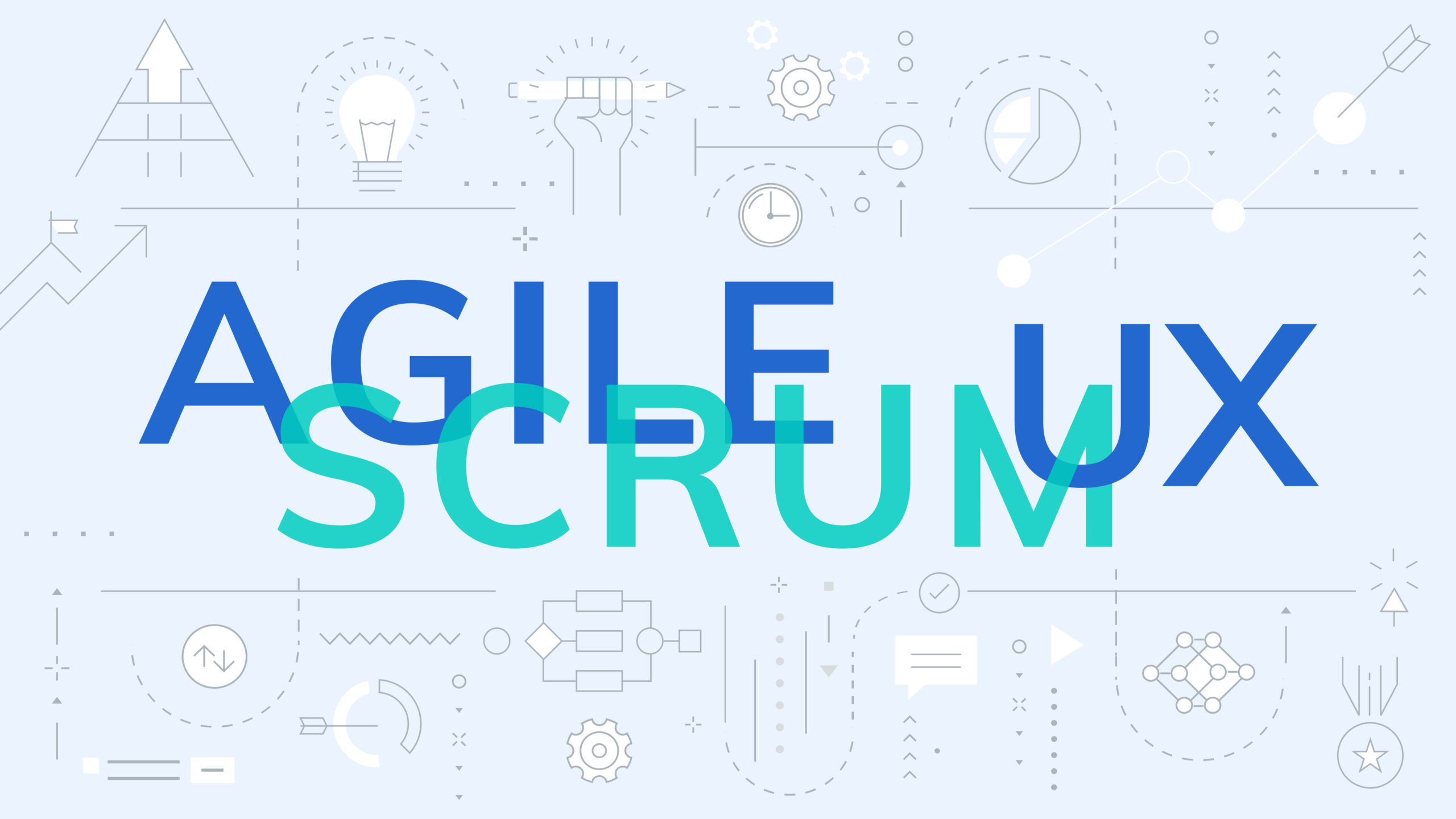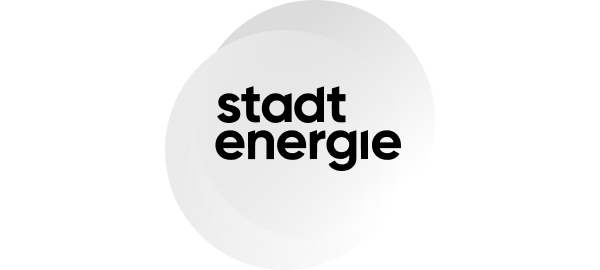
Introduction
In this blog post, I will share with you our agile User Experience (UX) design process and how UX with Scrum can be effectively combined to improve user happiness and optimize product development processes.
Scrum is undeniably a great framework for agile software development. It emphasizes the continuous delivery of features while learning from mistakes through frequent releases.
But Scrum alone is not enough. In an agile team, it’s not just about delivering features. They must also align with business goals and meet user needs. This is where integrating agile UX with Scrum becomes essential. The integration ensures that users have a positive and efficient interaction with the product. At MobiLab, we’ve found this approach successful, benefiting both our in-house solutions and numerous customer projects.
We will delve into two UX design processes. The first one, named UX Analysis, includes the research and concept stages, usually carried out during the planning phase. The second process, Continuous UX, involves the third stage, design and development, and happens within the sprints.

UX Analysis – Activities and outcomes in the planning phase
Scrum is typically designed for software development teams. While the development team is working in many short iterations of potentially usable product increments, UX Designers often work at a different pace. They aim to understand the big picture first. UX Analysis covers the entire journey from user research to user-centered conception. It starts with gathering customer goals, and user needs and ends with customer validation.
All these design activities need to be done in advance before the Developers start coding. But this consumes sprint time, causing delays for the rest of the team. However, skipping or rushing through these design activities can lead to a loss of focus on the overall user experience, potentially harming the product. Therefore, having a dedicated UX Analysis process before starting the sprint is crucial.
The workflow below shows an example of our UX Analysis process, inspired by IDEO’s Design Thinking methodology. It consists of 5 steps: understand, define, ideate, decide, prototype, and validate.

Understand: Get insights into the problem
In this activity, the team gathers information, discusses the business objectives, and creates a common understanding of the problem(s). UX Designers first create a research plan with a list of all required steps and estimated time. They think about who they need to interview or observe to gather user-centered data.
Tip: An efficient tool or asset for this activity is the Lean UX Canvas by Jeff Gothelf. It provides visibility to the team and on-time delivery, while also keeping important stakeholders informed.
Define: Identify the area to focus upon
In this activity, UX Designers conduct user interviews to empathize with their needs, pains, and perspectives. The goal is to get a deeper understanding of the problem(s) and to be in a better position to provide solutions to the challenges.
Tip: After the interviews all the user insights can be visualized in the form of a user journey map. It helps to focus on how a user persona thinks and feels throughout the journey. Once the user journey map is complete, it’s essential to share it with the rest of the team and gather feedback.
It’s also important to have input from different stakeholders, as they may have different perspectives on the user’s journey and be able to identify issues that UX Designers may have missed.
Ideate: Generate potential solutions
Once the problems are clearly defined, the UX Designer presents the user journey map to the team and facilitates a brainstorming session to generate design ideas, keeping in mind the clearly identified challenges. The ideas can be developed into rough sketches, flowcharts, or other tools to gain a clearer understanding of potential solutions.
Decide: Choose the best solutions
In this activity, the team selects the most promising solutions to be developed further. The UX Designer decides how to implement the solution in a prototype.
Prototype: Visualize solutions that work
In this activity, the UX Designer creates prototypes that can be tested and validated with users and stakeholders. The initial prototype is usually a low-fidelity User Interface (UI), such as wireframes, user flows, storytelling, or storyboarding.
Validate: Shape design solutions
Once the prototype is created, the UX Designer presents the wireframes to an audience, such as users and stakeholders, to validate the idea, and get feedback to refine and improve the wireframes.
The most important features, forming the Minimum Viable Product (MVP), are placed in the product backlog. A backlog is a list of requirements and features to be developed for a product in the next sprints, which helps the team gain a broader perspective on the product’s direction.
Once the product backlog is ready, the sprint can begin.
Continuous UX – Activities and outcomes in Scrum
During the sprints, UX Designers are responsible for developing user interfaces. In our experience, the best approach to that is the ‘Continuous UX’. This process is inspired by the developer’s practice of ‘Continuous Integration and Continuous Delivery‘ (CI/CD), wherein UX Designers deliver incremental feature designs rather than providing comprehensive designs.
This accelerates the development of UI design through shorter feedback loops by utilizing these activities: discover, deliver, and test.

Discover: Streamline planning and prioritization
This activity happens after the sprint refinement meeting, during sprint planning. The team pulls items (user stories and tasks) from the product backlog into the sprint backlog. It makes sure their items are ready to be developed and are prioritized for the current sprint. It’s important to remember that at this point, the UI design should only cover the prioritized features from the sprint backlog.
Tip: Occasionally check the User Story Mapping, which is typically made by the Product Owner (PO) during the planning phase. This method keeps the big picture in mind, considering the users’ perspectives, and prioritizes development efforts by breaking user stories into manageable tasks.
Deliver: Create User Interfaces (UIs)
This is when the UI design takes shape, which incorporates aspects of the component research, technical constraints, and brand guidelines. UX Designers pair with the Developers to define the details of the feature during the sprint and assist in delivering the feature with a great user experience.
Tip: Implement a Design System to make repetitive UI tasks easier. This is a collection of reusable assets and components. At MobiLab, we’ve developed our own Design System for building Data Integration Platforms. It enhances collaboration between Designers and Developers, maintains consistency, serves as a valuable resource, and acts as one source of truth for multiple projects.
Test: Enhance UX through feedback and iteration
Once the UIs are delivered, the implemented features are ready for testing. Usability testing allows teams to gather feedback from users and identify usability issues early. By integrating it into Scrum, iterative feedback loops are established.
Tip: Our Developers often use feature flags, a useful tool for deploying features without showing them to everyone right away. This is great for usability testing. For example, you can create a small group of users who get to see new features first, so you can collect feedback and watch how they use them before releasing the features to everyone.
Now we have a feature shipped to the users that they can test and validate. UX Designers either continue designing the remaining features from the sprint backlog or rework on created features based on the user feedback, which the PO has prioritized for the next sprint.
But how exactly do these activities in Continuous UX fit into each Scrum event?
UX responsibilities in Scrum events
The workflow shows the UX Analysis process combined with the Scrum events. It starts with the sprint planning using the product backlog and ends with the release of a solution (increment).
In this section, I’ll outline more ways in which UX Designers can improve communication and contribute effectively to the Scrum team during each Scrum event, beyond the activities mentioned above.

Backlog refinement
The first event is backlog refinement. The goal is to review product backlog items to make sure that they’re ready for the upcoming sprint planning meeting and ultimately the sprint.
UX Designers need to ensure their user stories are included in the backlog or add new ones. Their involvement in this meeting offers insight into what the development team will work on in the current sprint and provides additional support for the PO if needed.
Sprint planning
The next event is sprint planning, which typically occurs on the first to the second day of the sprint. The goal is to review and prioritize product backlog items while estimating their effort level.
UX Designers’ involvement in sprint planning is important. Much like development work, UX work needs to be considered and estimated in the sprint backlog. At the end of the sprint planning meeting, the entire team should have a clear understanding of their workloads and goals for the sprint.
Daily Scrum
This event is a short daily meeting, usually no more than 15 minutes. It focuses on enhancing communication, tracking progress, and promptly addressing any obstacles.
For UX Designers this is a good place to:
-
Share design updates, collaborations, and insights from user research.
-
Request input from the engineering team or PO.
-
Discuss potential blockers and schedule follow-up meetings as needed.
Sprint review or demo
The sprint review or demo usually happens on the second-to-last day of the sprint. In this event, the entire team presents their work and gathers feedback from stakeholders and users. The client’s decision determines whether the feature is released into production or carried over to the next sprint.
This event is a great opportunity for UX Designers to also present their work and share research and user-centered insights that influenced the current product iteration.
Retrospective
The final event is the retrospective, usually held on the last day of the sprint. This is when the team looks back at how things went during the sprint. It’s a good time for UX Designers to suggest process improvements because the meeting is about how the team works. Designers position their ideas as experiments to be tested during the next few sprints to keep things improving.
Conclusion
Effectively integrating UX in an agile world can be challenging. The activities presented here are only a portion of the options for integrating UX into Scrum. At MobiLab, our use of UX Analysis and the Continuous UX approach has proven effective. As we gain fresh insights and explore new methods, we are committed to refining our design process.
Stay tuned for updates as our design process continues to evolve!
Grace
Grace is a UX Designer at MobiLab. She makes sure that of all the designs related to Data Integration are clean and pixel perfect.
